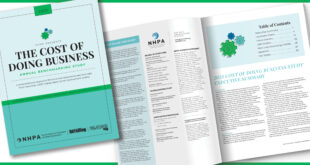Exploring the U.S. real estate market helps you anticipate future trends and customer needs. COVID-19 disrupted what began as a strong year for housing, but seven months into the pandemic, reevaluating key industry metrics and understanding how they will affect your business could prove vital. 2020 real estate trends
Todd Tomalak is principal at John Burns Real Estate Consulting, a housing research organization. In his role, Tomalak oversees building products research, including in-depth forecasts of building products spending in new construction and remodeling. For more information, visit John Burns Real Estate Consulting online at realestateconsulting.com.
What have been COVID-19’s major impacts on the U.S. housing market?
The effects of the pandemic have been enormous. Coming into the year, housing showed some very positive signs. Parts of the market were weak, like luxury housing where homes would sit for sale for years in high-income areas, but all of that weakness is currently gone. We’re now seeing low home inventory; people are purchasing almost anything that’s available. Housing has truly gained status in terms of where consumers are prioritizing spending their dollars.
What do strong housing starts mean for U.S. housing overall?
Looking at single-family housing starts in Florida alone, we’re seeing figures up 97 percent year-over-year for signed contracts. Texas is up 83 percent.
If you want to move out of your home, there’s no existing homes to buy. You can put in an order for a new home, but it’s going to take time before that turns into a start and time before that translates into orders for building products. I think we’re going to see a case where a lot of housing starts begin in 2020, but homebuilders make building product orders in 2021 due to delays we’re seeing in cycle times.
The supply of existing homes fell 21.1% annually, with just 1.5 million homes for sale at the end of July.
Source: U.S. Census Bureau
Existing home sales in July jumped about 25 percent over June. What does this surge reveal about the U.S. housing market?
Existing home sales figures represent closings. In March and April, we saw a wave of delayed closings as many businesses temporarily shut down. Many closings in April and May came due in July. The July existing home sales figures reflect the general strength of the housing market, but the issue is that you can’t buy what’s not for sale. With inventory so low, it’s no longer a demand issue, there are only so many homes that could have been purchased.
If anything, with strong demand and low supply, we should see home price appreciation, which is a positive indicator for the remodeling market. We’re enthusiastic about that and we’re already seeing big boxes report sales gains from DIY projects.
What should independent retailers know in terms of real estate activity?
Roughly 12 percent of major projects were canceled or postponed. At the same time, we saw a large shift toward unplanned, pandemic-driven DIY projects. That’s showing up in a lot of recent sales for retailers. Historically, the most useful indicator to predict small DIY project activity was wage growth. What’s wild is that personal income figures for April were up 12 percent due to the CARES Act stimulus. It really is translating into significant DIY project growth.
What’s on your mind for the remaining months of 2020 and 2021?
The pace of DIY remodeling growth will slow compared to summer. The activity was unreasonably strong; there’s no reason to believe it will keep going.
Next year, we could see uneven growth. We’re going to reach a point in the second quarter of 2021 where we’re lapping the unplanned projects that started during the pandemic. The overall year could turn out quite positive, but individual quarters could see negative growth simply because of how strong 2020 activity has been. Retailers will have to take the long view.
U.S. Housing Market at a Glance
U.S. homeownership has risen 3.7% since the first quarter of 2019.
Source: U.S. Census Bureau
Home prices were up 4.3% in June over the same period in 2019.
Source: S&P CoreLogic Case-Shiller Indices
Put It to Use
Customers are on the move. Help them get the greatest home value by recommending affordable DIY projects. 2020 real estate trends
 Hardware Retailing The Industry's Source for Insights and Information
Hardware Retailing The Industry's Source for Insights and Information







